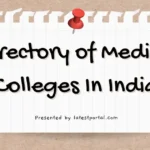Pursuing a Master’s Degree in Education can be costly, but affordable options exist. Online programs often offer lower tuition rates compared to traditional on-campus programs. In-state public universities provide significant savings, especially for residents. Scholarships, grants, and financial aid can further ease the financial burden.
Many universities offer flexible payment plans and work-study opportunities, making higher education more accessible. Researching and comparing different institutions and programs is crucial to finding the most cost-effective path. By planning strategically and utilizing available resources, obtaining a Master’s Degree in Education becomes an achievable and affordable goal.

Credit: www.amazon.com
Choosing Affordable Programs
Choosing an affordable master’s degree program in education can be challenging. Evaluating factors like public vs. private and online vs. on-campus can help. This guide will assist in making an informed decision.
Public Vs. Private
Public universities often offer lower tuition fees compared to private institutions. State funding helps keep costs down for in-state students. Private universities, while generally more expensive, may offer more scholarships and financial aid options. Consider the following points:
- In-state tuition: Public universities offer reduced rates for residents.
- Scholarships: Private universities may offer substantial scholarships.
- Reputation: Some private institutions have prestigious education programs.
Online Vs. On-campus
Online programs can be a cost-effective choice for earning a master’s degree in education. These programs often have lower tuition fees and eliminate commuting costs. Consider the benefits of each:
| Online Programs | On-Campus Programs | |
|---|---|---|
| Flexibility | Study at your own pace. | Fixed schedules. |
| Cost | Lower tuition and no commuting costs. | Higher tuition and living expenses. |
| Networking | Virtual interactions with peers. | Face-to-face networking opportunities. |
Choosing between online and on-campus programs depends on your personal and financial situation. Weigh the pros and cons to find the best fit for you.
Scholarships And Grants
Getting a master’s degree in education can be expensive. Scholarships and grants can help reduce costs significantly. They provide financial support without the need to repay. Below, we’ll explore different funding sources.
Government Funding
Government funding is a major source of scholarships and grants. Both federal and state governments offer financial aid. Federal Pell Grants are available for graduate students. They are based on financial need. Many states also offer grants for education students. Check your state’s education department website for more details.
| Grant Type | Eligibility | Amount |
|---|---|---|
| Federal Pell Grant | Financial Need | Up to $6,495 |
| State Grants | Varies by State | Varies by State |
Private Scholarships
Private scholarships come from organizations, businesses, and foundations. They have various eligibility criteria. Some require essays or recommendations. Others are based on merit or community service.
- TEACH Grant: For students planning to teach in high-need fields.
- Fulbright Program: Offers funding for study and research abroad.
- Local Community Scholarships: Check with local clubs and businesses.
Applying for multiple scholarships increases your chances. Always read the application guidelines carefully.
Employer Assistance
Many employers offer assistance for employees seeking a master’s degree in education. Utilizing these programs can reduce your educational costs significantly. Here are two primary ways employers can help: tuition reimbursement and professional development funds.
Tuition Reimbursement
Many companies provide tuition reimbursement programs. These programs cover part or all of your tuition fees. This reduces the financial burden of obtaining a master’s degree.
Check with your HR department about available tuition reimbursement programs. Some companies may require you to maintain a certain GPA. Others might need you to stay with the company for a specific period after graduation.
Here is a simple example of how tuition reimbursement works:
| Company | Tuition Covered | Requirements |
|---|---|---|
| Company A | Up to $5,000 per year | Minimum GPA 3.0 |
| Company B | 100% tuition fees | 2 years of service post-graduation |
Professional Development Funds
Another way employers support education is through professional development funds. These funds are designated for employee growth and learning.
Professional development funds can cover costs like:
- Course materials
- Workshops
- Online courses
- Conference fees
To access these funds, speak with your supervisor or HR department. They can guide you on the application process and eligibility criteria.
Combining tuition reimbursement and professional development funds can make your master’s degree affordable. Take advantage of these opportunities to further your education with minimal financial strain.

Credit: www.geteducated.com
Work-study Opportunities
Pursuing a master’s degree in education can be expensive. Work-study opportunities offer a cost-effective way to get your degree. These opportunities allow you to work while studying. You earn money and gain valuable experience. Below, explore some of the best work-study options.
Graduate Assistantships
Graduate assistantships are a great way to fund your education. They provide tuition waivers and stipends. You work for the university, helping professors or departments. Tasks may include grading papers, conducting research, or assisting in labs.
| Benefits | Details |
|---|---|
| Tuition Waivers | Full or partial tuition coverage. |
| Stipends | Monthly payments for your work. |
| Experience | Hands-on learning in your field. |
Research Positions
Research positions offer another excellent work-study option. These roles involve working on research projects. You collaborate with professors and other students. You may collect data, analyze results, or write reports.
- Funding: Often includes tuition support and stipends.
- Experience: Gain research skills and knowledge.
- Networking: Build connections with professionals in your field.
Both graduate assistantships and research positions provide valuable benefits. They help you save money and gain experience. These opportunities make getting a master’s degree in education affordable.
Budget-friendly Living Options
Pursuing a Master’s Degree in Education can be costly. However, choosing budget-friendly living options can save you a lot of money. Here are some ways to reduce your living expenses while studying.
Roommates
Living with roommates is a smart way to cut costs. Sharing a house or apartment splits the rent, utilities, and other expenses. This arrangement also means shared chores, which can save time. You can find roommates through:
- University bulletin boards
- Social media groups
- Roommate matching websites
Make sure to meet potential roommates before moving in. Discuss house rules and expenses upfront to avoid conflicts.
Campus Housing
Campus housing often provides the most cost-effective living option. Many universities offer dormitories or shared apartments for graduate students. Living on campus can save you money on transportation. You may also have access to meal plans, which can be cheaper than cooking yourself.
Here are some benefits of campus housing:
| Benefit | Description |
|---|---|
| Convenience | Close to classes and university facilities |
| Community | Easy to meet other students |
| Security | Campus housing often has security measures in place |
Make sure to apply early for campus housing, as spaces can fill up quickly.
Accelerated Programs
Accelerated programs offer a fast track to a Master’s Degree in Education. These programs are designed to save you time and money. They allow you to enter the workforce quickly. By choosing an accelerated program, you can earn your degree in less time than traditional programs.
One-year Master’s
A One-Year Master’s program is a great way to save time. These programs are intensive and cover the same material as traditional programs. You can complete your degree in just one year. This option is ideal for dedicated students.
One-year programs often have a more rigid schedule. Students may need to attend classes full-time. This is a small price to pay for the rapid completion. Here are some benefits:
- Quick entry into the job market
- Less tuition cost
- The same quality of education
Combined Bachelor’s/master’s
A Combined Bachelor’s/Master’s program is another affordable option. This program allows students to work towards both degrees at the same time. You can complete both degrees in as little as five years.
These programs are designed for high-achieving students. They require careful planning and dedication. Combining both degrees saves you time and money. Key advantages include:
- Reduced overall tuition cost
- Faster transition to the workforce
- Streamlined curriculum
This type of program is perfect for those who are sure of their career path. It provides a seamless transition from undergraduate to graduate studies.
Credit Transfers
Credit transfers can significantly reduce the cost of earning a Master’s Degree in Education. By leveraging past academic achievements and professional experiences, you can save time and money. Here are some effective strategies to make the most of credit transfers:
Previous Coursework
If you have completed relevant coursework during your bachelor’s degree, you may be eligible for credit transfers. Universities often accept these credits towards your Master’s Degree in Education. This can shorten your study duration and reduce tuition fees. Check with your chosen university to see which credits they accept.
| Course | Credits Earned | Institution |
|---|---|---|
| Educational Psychology | 3 | XYZ University |
| Curriculum Development | 4 | ABC College |
Professional Experience
Your professional experience in education can also be a valuable asset. Many programs offer credit for relevant work experience. This is known as Prior Learning Assessment (PLA). If you have teaching experience or have held other educational roles, you might qualify for these credits.
- Submit a detailed portfolio of your work experience.
- Provide references from employers or colleagues.
- Showcase any professional development courses or certifications.
Colleges and universities often have specific guidelines for PLA credits. Make sure to review these carefully. Successfully obtaining these credits can significantly cut down your costs and time spent on the degree.
Online Learning Platforms
Online learning platforms offer affordable ways to earn a Master’s Degree in Education. These platforms provide flexibility, allowing you to study at your own pace. You can access a wide range of courses and programs from the comfort of your home.
Moocs
MOOCs, or Massive Open Online Courses, are an excellent option for affordable learning. They offer free or low-cost courses from top universities worldwide. Here are some popular MOOC platforms:
- Coursera – Offers courses from universities like Stanford and Yale.
- edX – Partners with Harvard, MIT, and other top institutions.
- Udacity – Specializes in tech and vocational courses.
MOOCs often provide certificates upon completion. These certificates can enhance your resume. Though they may not count as full degrees, they add value to your education.
Accredited Online Degrees
Accredited online degrees are recognized and respected. These programs are often more affordable than traditional on-campus degrees. Here are some institutions that offer accredited online Master’s Degrees in Education:
| Institution | Program | Cost |
|---|---|---|
| University of the People | Master of Education (M.Ed.) | Low tuition fees, scholarships available |
| Western Governors University | Master of Arts in Teaching | Affordable flat-rate tuition |
| Capella University | Master of Education | Competency-based learning, tuition discounts |
FAQ: Frequently Asked Questions
What Is The Easiest Master’s Degree To Get In Education?
The easiest master’s degree in education is often considered the Master of Education (M. Ed. ) In Educational Leadership. This program usually requires less intensive research and focuses more on practical skills. It is designed for those looking to advance their careers in administrative roles within schools.
How To Make A Master’s Degree Affordable?
Apply for scholarships and grants. Choose in-state or online programs. Work part-time or seek employer tuition assistance. Reduce costs by living at home. Consider federal student loans with low interest rates.
Is An Education Master’s Worth It?
Yes, an education master’s can boost career prospects and salary. It offers advanced skills and knowledge, enhancing teaching effectiveness.
What Is The Lowest Paying Master’s Degree?
The lowest-paying master’s degree is often in the field of Early Childhood Education. Graduates typically earn lower salaries compared to other advanced degrees.
Conclusion
Achieving a master’s degree in education affordably is possible with the right strategies. Explore online programs, scholarships, and financial aid options. By planning carefully and seeking budget-friendly choices, you can advance your education without breaking the bank. Start your journey today and invest in your future wisely.











1 thought on “The cheapest way to get a Master’s Degree in Education”